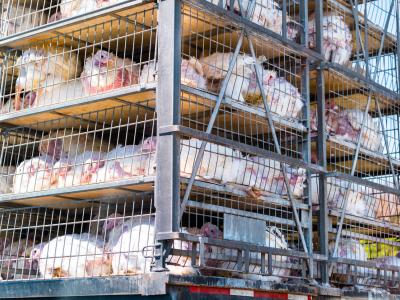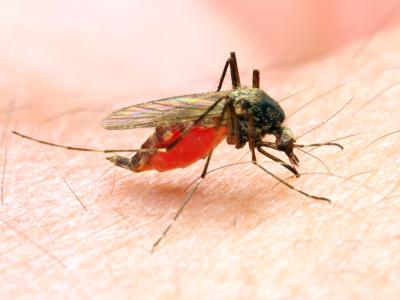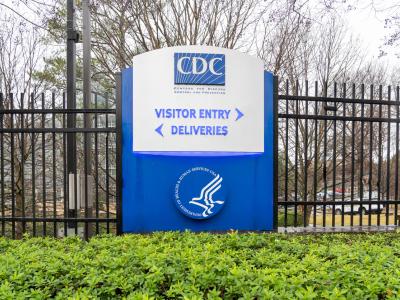Sending follow-up text message reminders about receiving a COVID-19 vaccination improved appointment scheduling and vaccination rates in the University of California Los Angeles (UCLA) Health system, according to a Nature study yesterday.
The randomized, controlled trial included 93,354 Californians who were eligible in early 2021 (ie, those above 65 or at high risk for poor COVID-19 outcomes). Of those who didn't receive a follow-up text, 7.20% made appointments within 6 days of the first invitation anyway and 13.89% received their first dose within 4 weeks at UCLA Health.
Receiving a follow-up text on the next business day, however, increased appointments and vaccinations by 6.07 and 3.57 percentage points, respectively.
"The Delta variant [B1617.2] is driving increased COVID infections across the globe, and currently in the United States more than 97% of COVID related hospitalizations are in unvaccinated people," said co-author Daniel M. Croymans, MD, MBA, of UCLA Health, in a Carnegie Mellon University press release.
"Our study highlights that marrying text messaging, a widely accessible technology, alongside behavioral science, may help deliver messages that encourage others to get vaccinated—helping to protect our community and our economy."
In the study, the authors also examined different types of text message reminders as well as the effect of a second follow-up text reminder sent 8 days after the first.
Importance of 'ownership language'
On Jan 29, cohort patients, who averaged 73 years old, became eligible for COVID-19 vaccines and were sent a UCLA Health invitation to schedule an appointment. Then, on Feb 1, the first weekday after the initial notification, the cohort was split into five different arms with about 20,000 people in each.
One group received no follow-up text message, but the others received one of four messages with a web link to schedule their first vaccine dose. Text messages varied from a simple reminder, a simple reminder with a 2-minute informational video addressing vaccine and COVID-19 misconceptions, a reminder with ownership language (eg, "claim your dose"), and a reminder with both ownership language and video.
Ownership language was tied to the largest increase in appointments and vaccinations among those who received a text message, increasing appointment scheduling and first-dose vaccinations 1.51 and 1.09 percentage points above the 12.58% and 17.01% uptake in those who had a text without ownership language. Compared with those who didn't receive any follow-up messages on Feb 1, the increase was 6.83 and 4.13 percentage points, respectively.
The informational video appeared to have no significant effect, which contrasted a prior vaccination intention survey the group had conducted on 3,181 California residents, 515 of whom were in the video arm. But viewership numbers may have been key, the authors say: Less than 21% of those who received the video in the real-world scenario watched it, while all survey participants did.
"The insights from this work could inform strategies to motivate health-related behaviors more broadly, such as scheduling preventive care tests or participating in health-related programs," the authors write. "To that end, it is important to note that the discrepancy observed between our RCTs and online studies highlights the value of pilot testing interventions in the field before deploying them at scale."
For the second follow-up text, the researchers averaged out the effects of the various messages and found that recipients—who had all received the first follow-up—had greater appointment and vaccination rates compared with the control group. The remaining control group had 3.10% appointment and 6.16% vaccination rates, but the people who received a second text had rates 1.65 and 1.06 percentage points higher, respectively. Despite the smaller increases, the authors say they are still notable as this group most likely has higher vaccine hesitancy.
Overall, the authors found that any text message approach was most effective on people who typically received seasonal flu shots.
Effects outside the health system
The study intervention focused on prompting participants to register for COVID-19 vaccines through UCLA Health, but the authors discovered that the text messages may have influenced recipients to get the vaccine outside of the health system as well. After the first follow-up text message, the researchers estimated that up to 33.95% of recipients received their first doses within 4 weeks anywhere, compared with the 31.85% of the control arm in the study.
"The fact that the effect of receiving one reminder on vaccinations at any location could last one month is remarkable, considering that patients may have been exposed to numerous sources of communication about the vaccine during that period," the authors write.
Two weeks after the second reminder, text recipients had a 1.0 percentage-point increase above the control's 12.04% vaccination rate, although it was not statistically significant after 4 weeks. For both this scenario and the UCLA Health–specific one, the researchers suggest the smaller increases may be due to the higher vaccine hesitancy in these people who have not signed up for a dose thus far.
"It is also worth noting that, had we designed the reminders to remove barriers to getting vaccinated at a broad set of locations (rather than focusing on UCLA Health), our reminders might have exhibited larger effects on vaccination anywhere," the authors add.
"The best nudging approaches to use will vary depending on individuals' attitudes towards the COVID-19 vaccine," concludes Mitesh S. Patel, MD, MBA, of Ascension Health in St. Louis, in a related commentary.
"For example, individuals who are hesitant about the vaccination often have a strong emotional response to the risks and benefits of the vaccine, whereas those who are apathetic about it have weakly held attitudes and often have not invested much effort in considering vaccination. Appropriately tailoring interventions to the population of interest is likely to lead to higher success than is a one-size-fits-all approach."






















